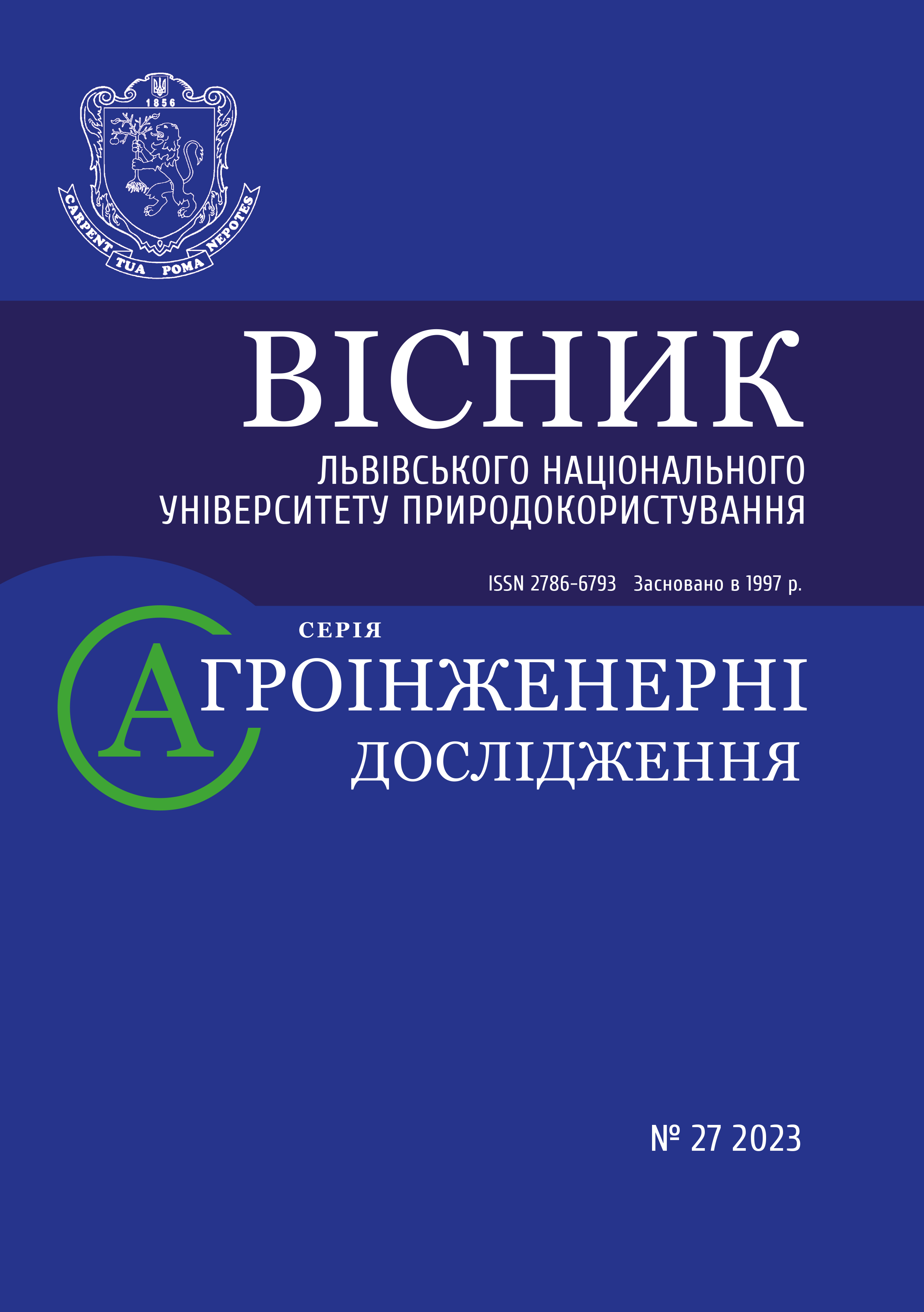Методологічний підхід до вибору військової автомобільної техніки
DOI:
https://doi.org/10.31734/agroengineering2023.27.089Ключові слова:
військова автомобільна техніка, мобільність, од аналізу ієрархій, швидка оцінка ситуації, особа, що здійснює оцінкуАнотація
Потрібно чітко розуміти, що найближчим часом необхідна кількість колісної військової техніки різного класу/тоннажності вироблятися не буде і постане проблема у швидкому і повному розв’язанні цієї задачі. Найбільш раціональним шляхом її вирішення є вибір колісної техніки за технічними характеристиками/показниками, що найбільше підходить до вітчизняних умов, щоб якісно укомплектувати парк колісних машин Збройних сил України і підрозділів Національної гвардії України.
На основі аналізу парку колісних машин основних країн-виробників військової автомобільної техніки та нормативно-технічних документів з питань мобільності напрацьовані підходи для її визначення в наших складних умовах. Зокрема визначено, що мобільність – це комплексний показник, що охоплює швидкохідність, маневреність, керованість, прохідність, стійкість та автономність військової автомобільної техніки (ВАТ).
У статті запропонований методологічний підхід застосування швидкої оцінки ситуації за допомогою методу аналізу ієрархій з урахуванням технічних критеріїв, за якими доводиться обирати автомобільну колісну техніку.
Суть методу аналізу ієрархій полягає в побудові ієрархічної моделі, визначенні власних векторів і власних чисел квадратних обернено симетричних матриць, перевірці узгодженості результатів.
Обраний підхід дозволяє ранжувати базові властивості мобільності ВАТ, що, своєю чергою, допоможе виділити ті з них, що є найважливішими зараз для вибору військової техніки. Критерії відбору сформовані на основі чинної законодавчо-нормативної бази, що стосується оборонних закупівель державним коштом.
Проведені нами розрахунки дозволяють визначити вагову частку кожного із семи основних технічних показників, що суттєво впливають на показники мобільності військових колісних машин на сучасному полі бою і в подальших оцінках інших зразків військової техніки.
Посилання
Arndt, K., Cormier, K., & Ryazanov, E. (2005). Value Chain Management and Overcoming Rural Poverty. Project Experience in Kyrgyzstan. Bishkek: Local Market Development. 50 p. [in Kyrgyzstan].
Badiul, M. H., & Kramarenko, V. A. (2013). Applying the method of analytic hierarchy in projecting and constructing. Construction, materials science, mechanical engineering, 70, 27-35. [in Ukrainian].
Issues of military procurement: Resolution of the Cabinet of Ministers of Ukraine of March 03, 2021 №363 (amended May 16, 2023) (2021). Retrieved from: https://zakon.rada.gov.ua/laws/show/363-2021-%D0%BF#n204 (Accessed 01 August 2023). [in Ukrainian].
Kulchytska, H. B., & Predko, L. S. (2008). Applying the method of hierarchy analysis when choosing projects in printing. Printing and publishing, 1, 51-60. [in Ukrainian].
Melnykov, O. V., & Kotliarevsky, Y. V. (2014). Increasing efficiency of environmental activity in printing. Scientific notes [Ukrainian Academy of Printing], 1-2 (46-47), 104-111 [in Ukrainian].
On military procurement: Law of Ukraine of July 17, 2020 № 808-IX (last amended February 24, 2023) (2020). Retrieved from: https://zakon.rada.gov.ua/laws/show/808-20#n414 (Accessed August 01, 2023) [in Ukrainian].
Ryzhakova, G., Petrukha, S., Petrukha, N., Krupelnytska, O., & Hudenko, O. (2022). Agro-Food Value Added Chains: Methodology, Technique and Architecture. Financial and Credit Activity Problems of Theory and Practice, 4(45), 385–395. [in Ukrainian].
Saaty, T. L. (2002). How to make and justify a decision: the analytic hierarchy process. Part 1. Examples and Applications. Systems Research and Information Technology, 1, 95–108. [in USA].
Saaty, T. L. (2003). The Analytic Network Process. Examples. Part 2.3. System research and information technologies, 4, 7–23. [in USA].
Saaty, T. L. (2003). Theory Analytic Hierarchy and Analytic Network Processes-Examples. Part 2.2. System research and information technologies, 2, 7–33. [in USA].
Saaty, T. L. (2003). Theory of the Analytic Hierarchy Process. Part 2.1. Systems Research and Information Technology, 1, 48–71. [in USA].
Saaty, T. L. (2003). Theory of the Analytic Hierarchy Process. Part 2.1. Systems Research and Information Technology. Issue №1. Р. 56-64. [in USA].
Semenyuk, E. P., Olyanyshen, T. V., Senkivsky, V. M., Melnikov, O. V., & Kotlyarevsky, Y. V. (2012). Ekolohizatsiya suspilʹstva: Sotsialʹna rolʹ ta modelyuvannya. Lviv: Ukrainian Academy of Printing. [in Ukrainian].
Shynkar, S., Brynzei, B., Rozumovych, N., & Kurliak M. (2019). Modeling the Effects of Key. Threats on the Economic Security of Industrial Enterprises. SHS Web Conf. Vol. 67. Retrieved from: https://www.shs-conferences.org/articles/shsconf/abs/2019/08/shsconf_NTI-UkrSURT2019_04010/shsconf_NTI-UkrSURT2019_04010.html (Accessed August 01, 2023). [in Ukrainian].
Some issues of military procurement for the period of martial law: Resolution of the Cabinet of Ministers of Ukraine of November 11, 2022 № 1275 (last amended July 18, 2023) (2022). Retrieved from: https://zakon.rada.gov.ua/laws/show/1275-2022-%D0%BF#Text (Accessed August 01, 2023). [in Ukrainian].
Trunova, O. V. (2013). Saaty method for making managerial decisions. Bulletin of Chernihiv National Pedagogical University. Ser. Pedagogical Sciences, 108.1. Retrieved from http://nbuv.gov.ua/UJRN/VchdpuP_2013_1_108_34 (Accessed August 01, 2023). [in Ukrainian].


